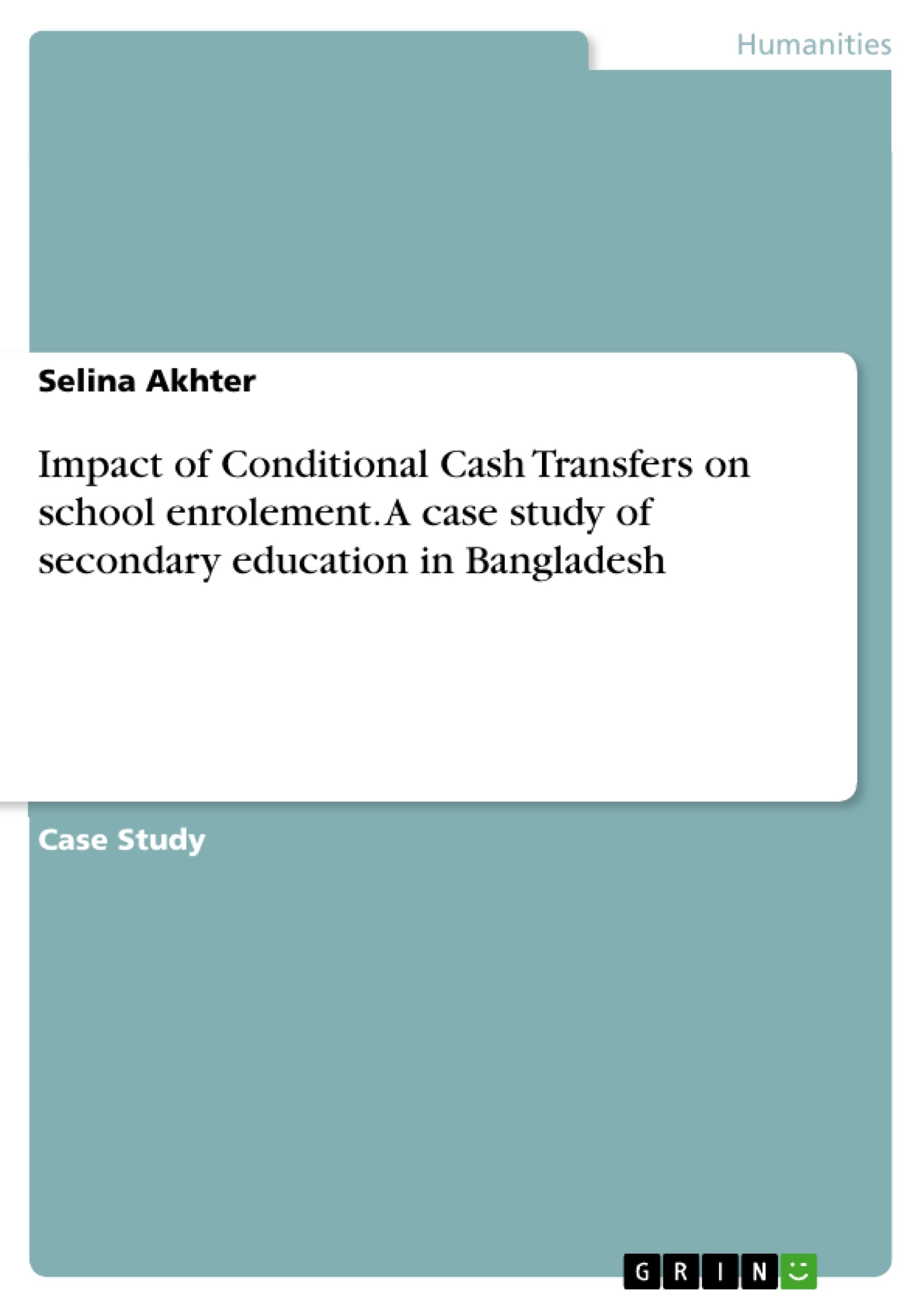This study examines the impact of Conditional Cash Transfer (CCT) on school enrolment of secondary education in Bangladesh. By analysing the existing literature the study makes an analytical framework which gives the premises for the understanding that how CCT works on student enrolment. After discussing the demand and supply side initiatives of CCT this paper examine the data of enrolment rate from 1973 to 2012.
The data showed that CCT plays major role in increasing the girl’s enrolment in secondary education of Bangladesh. However, the CCT has very little effects on boy’s enrolment. The existing litterateur analysis showed that the reason behind the less impact of boys’ enrolment is socio economic and inbuilt error of the existing programs.
Contents
List of Tables
1. Introduction
2. Analytical Framework: Relationship between CCT and School enrolment
What is CCT?
CCT as a demand side intervention: how does it work?
CCT as a supply side initiative: Design and Implementation process
Selecting Target beneficiaries
Payment
The Conditions
Monitoring and evaluation
CCT and its critics
Concluding remarks and synthesis
3. Empirical Analysis
CCT and Education policy of Bangladesh
Conditional Cash Transfer as a demand side intervention: How does it work in secondary education in Bangladesh?
From 1994 to 2008
During 2009 to Now
CCT and supply side initiatives: Design and implementation process in Bangladesh
Selecting Target beneficiaries
Conditions
Payments
Monitoring and Evaluation
Effects of CCT on School Enrolment
The enrolment rate of students in secondary level before introducing CCT
The girls enrolment rate after introducing CCT
Enrolment rate after 2008
CCT and its limitations in context of Bangladesh
4. Conclusion and synthesis
References



